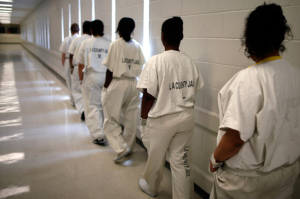White Kids More Likely to Abuse Drugs Than Blacks; Blacks Arrested More Often
Studies shows racial discrepancies between drug use and drug arrests
White children between the ages of 12 and 17 are nearly twice as likely to have a drug problem than African-Americans, despite African-American children being nearly twice as likely to be arrested for a drug charge, separate studies have revealed.
The study on drug abuse, published Monday by the Archives of General Psychiatry, used data from 72,561 youth interviewed by the National Survey on Drug Use and Health. From this data, researchers found that 37 percent of children between the ages of 12 and 17 have used alcohol or drugs in the past year, with nearly 8 percent using drugs or alcohol often enough to have a substance-abuse disorder.
Out of the 8 percent who had a drug problem, the racial breakdown was: 15 percent Native American; 9.2 percent mixed racial heritage; 9.0 percent white; 7.7 percent Hispanic; 5 percent African-American, and 3.5 percent Asian/Pacific Islander.
"Our goal is to alert people to the burden of drug problems and also to how some of our concern about who has these problems may not be true," says Dr. Dan Blazer, senior author of the study and a professor of psychiatry at Duke University, according to Time magazine. "There's a perception among many individuals that African-Americans as a group - regardless of socioeconomic status - tend to abuse or use drugs at higher rate and this [does not support] that."
Nevertheless, arrest rates show a much stronger focus on blacks than whites. In a 2008 study of juvenile arrest trends by the United States Department of Justice data showed that for every 1,000 African-American between the ages of 10 and 17 arrested for a drug abuse violation, less than 600 white children were arrested between 2004 and 2008.
The high rates of drug use among young people also reveals that marijuana and analgesic opioids, or painkillers, were used more often than alcohol, according to the study.
In 2009, the National Center on Addiction and Substance Abuse (CASA) released a study that found children between the ages of 12 and 17 were increasingly able to get marijuana and prescription drugs than alcohol. Although the study did not reveal why access to marijuana had increased, parents could be partially blamed for the increased access to prescription drugs could be partially due to parents, the Christian Science Monitor reported.
"A substantial number of American parents have become passive pushers," said CASA chairman Joseph Califano Jr. "A few decades ago, parents used to have a lock on the liquor cabinet. Maybe there should be a lock on the medicine cabinet."





























